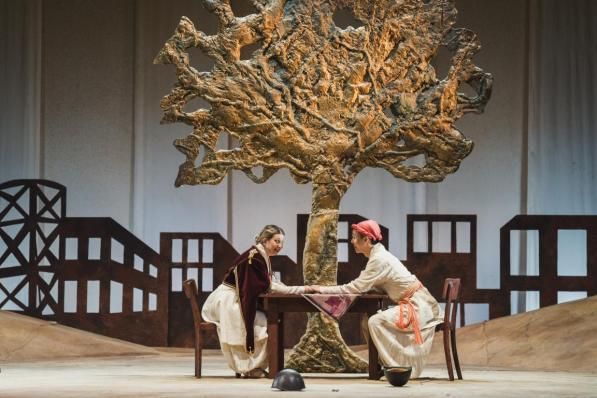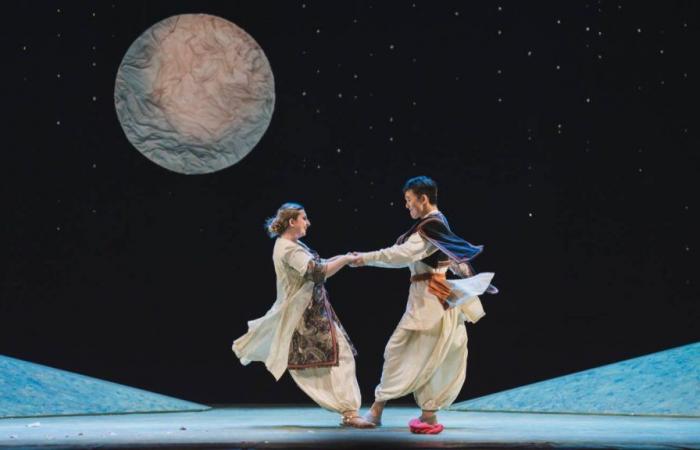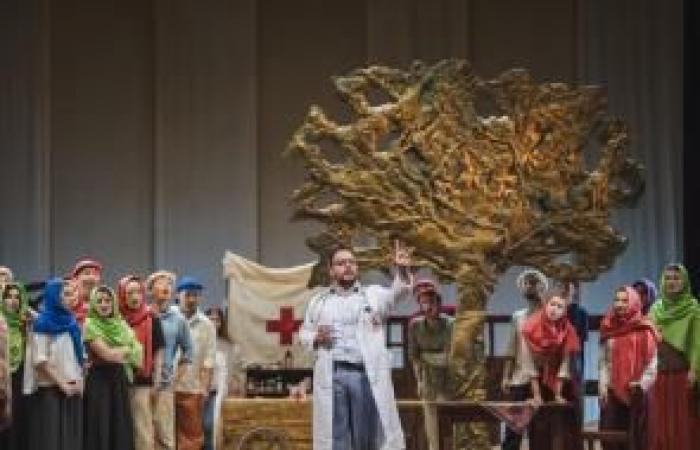The Florentine public is used to entering the Goldoni Theatre for niche works that require a small instrumental and vocal ensemble: in recent years we have therefore seen some Britten, a lot of baroque and a few Mozarts. This time, however, we enter for something totally different given that we are doing a repertoire work such as The elixir of love Of Donizetti. The occasion is given by a collaboration between theAcademy of Fine Arts and the Luigi Cherubini Conservatory of Music of Florence in an end-of-year performance which nevertheless turns out to be enjoyable in all its aspects.
The show is signed by Francesco Torrigianiwith the lights of Lucilla Baroniand the sets and costumes designed by School of Scenography of the Academy of Fine Arts. Torrigiani sets the work in a Middle Eastern country militarily occupied by troops which also include Belcore and their henchmen; Doctor Dulcamara is also a charlatan here but presents himself as a humanitarian aid doctor. Torrigiani therefore highlights these two characters who burst into the world of Adina and Nemorino for a short time but change it irremediably before leaving regardless of what they have done in this community. Despite the almost exotic change of setting, the playful melodrama maintains its original irony, especially in a character like Belcore, who enters a small tank with a modified bicycle. If the first act takes place entirely around a golden tree, in the second the exotic elements are highlighted more, as seen from the suspended carpet at the beginning which then gives way to a large moon surrounded by stars, which evokes atmospheres from A Thousand and One Night. The only real and interesting change occurs at the end when Belcore is kicked out of the same theater space, almost stoned by the community itself which had previously been fascinated by him.
On the musical front, Concetta Anastasi he accompanies and supports the soloists with the right care, despite various inaccuracies of the soloists (probably a few more rehearsals would have helped) and above all of the orchestra of the not exactly irreproachable Luigi Cherubini Conservatory. Despite this, Anastasi manages to give the score the right rhythm and theatrical pace, also finding new timbral mixes given by the reduced staff. The choir prepared by Michele Manganelli it stands out above all in the female component, which is more precise and refined than the male one.
The cast is made up entirely of young singers. Beatrice Caterino builds a growing Adina from an interpretative point of view, becoming more and more intense; musically she stands out for her variegated timbre and soaring high notes, where the central register is less incisive. In front of her Yukang Zheng He turns out to be a Nemorino with a full-bodied voice, with a very beautiful, purely tenor timbre, even if it is stingy with dynamics and a little imprecise.
Gonzalo Godoy Sepulveda outlines a very musical Belcore with a beautiful dark timbre that can be appreciated especially in the more relaxed moments such as the sortie “Come Paride vezzoso”. Matteo Torcaso in the guise of Doctor Dulcamara he is certainly the most confident of the entire singing company, both scenically and musically, as can be seen from the attention to phrasing. The cast closes Anna Vigoriwhich portrays a self-confident and well-sung Giannetta.
Great success for everyone, despite the prevailing heat, with many applause during the performance and many ovations at the end of the performance. 


Goldoni Theatre
THE ELIXIR OF LOVE
Playful melodrama in two acts
Booklet by Felice Romani
Music by Gaetano Donizetti
Adina Beatrice Caterino
Nemorino Yukang Zheng
Belcore Gonzalo Godoy Sepulveda
Doctor Dulcamara Matteo Torcaso
Giannetta Anna Vigori
Luigi Cherubini Conservatory of Music in Florence
Director Concetta Anastasi
Choir master Michele Manganelli
Direction Francesco Torrigiani
Lights Lucilla Baroni
Sets and costumes School of Scenography
of the Academy of Fine Arts of Florence
Florence, 20 June 2024

Photo: Michele Monasta

Photo: Michele Monasta

Photo: Michele Monasta














